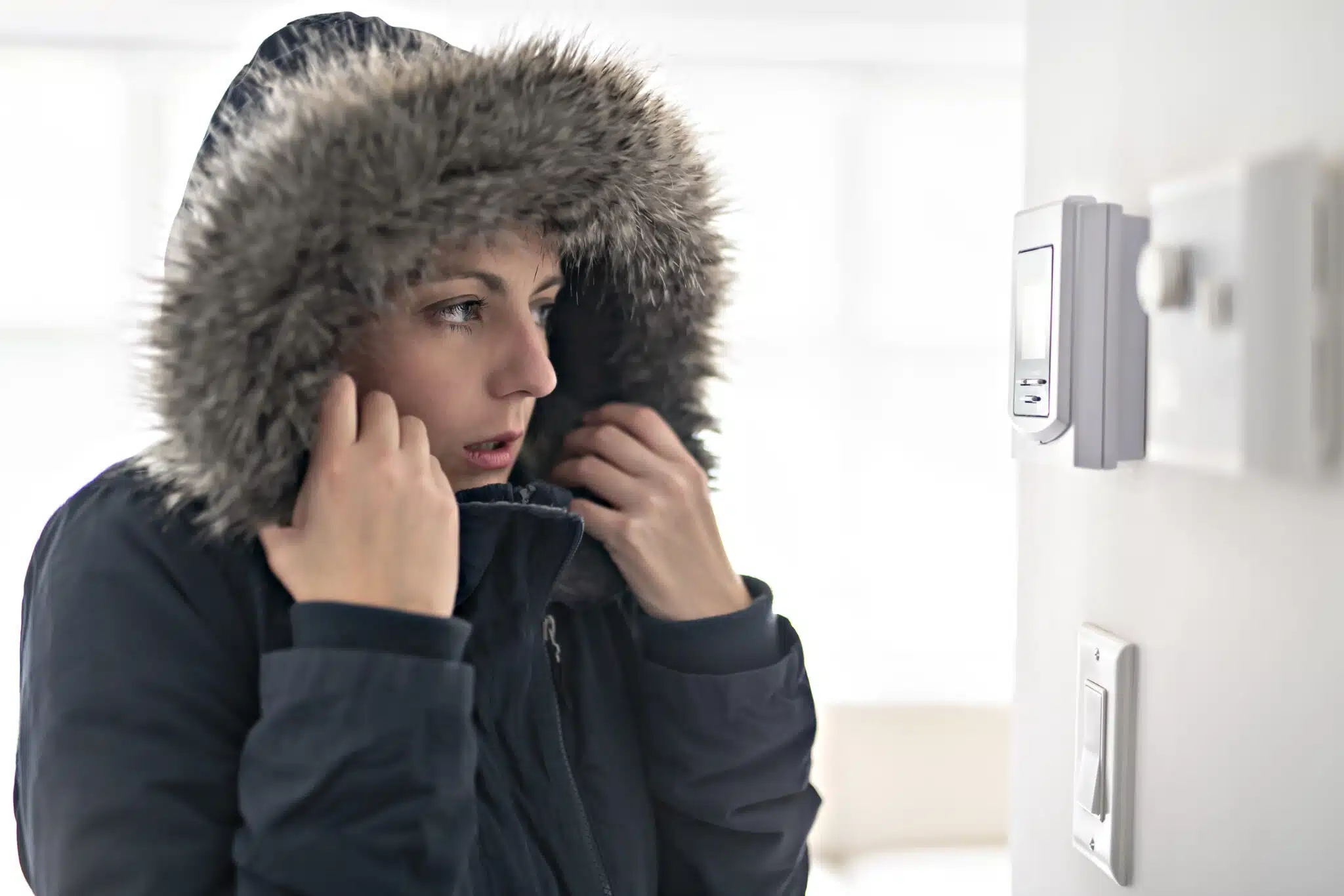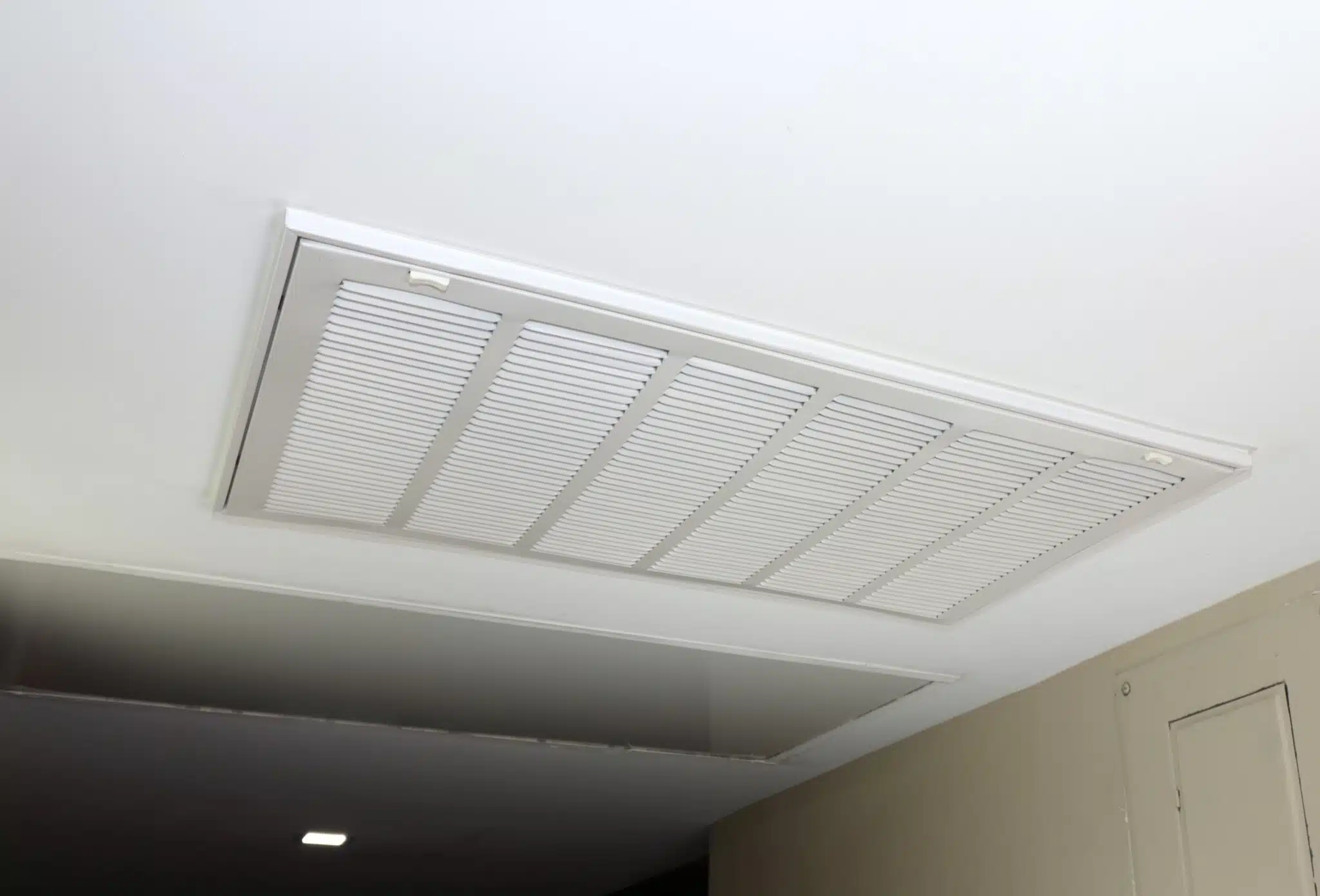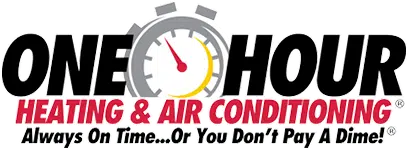Staying warm in Harrisburg’s winter requires smart thermostat settings. Set it to 68°F for comfort and efficiency, then lower it at night to save energy. Small adjustments prevent unnecessary heating costs while keeping your home cozy. Smart thermostats simplify temperature control, ensuring warmth without waste. With the right thermostat settings, you will enjoy a comfortable home all season long.
Recommended Daytime Thermostat Settings for Winter
Keeping your home warm in Harrisburg’s winter does not mean sacrificing efficiency. The right thermostat settings help maintain comfort while keeping heating costs under control. Experts recommend setting your thermostat to 68°F during the day when your home is occupied. This temperature provides a cozy indoor environment without overworking your heating system or driving up energy bills.
If 68°F feels too cool, consider wearing warm clothing or using blankets instead of increasing the temperature. A programmable thermostat can automatically adjust settings based on your schedule, ensuring your home stays comfortable without wasting energy. Smart thermostats offer even greater control by learning your habits and optimizing efficiency.
Maximizing natural heat can also improve comfort. Open curtains on sunny days to let warmth in, then close them at night to retain heat. Sealing drafts around doors and windows prevents heat loss, helping your furnace work more effectively. These small adjustments make a big difference in maintaining warmth.
Using the right thermostat settings during the day ensures consistent temperatures while keeping energy costs manageable. By combining strategic temperature control with simple energy-saving habits, you will enjoy a comfortable and efficient home all winter long.
Ideal Nighttime Thermostat Settings for Better Sleep
Finding the right thermostat settings for nighttime can improve sleep quality while keeping your home energy-efficient. Experts recommend setting your thermostat between 60–65°F to create an ideal sleep environment. Cooler temperatures help your body maintain its natural rhythm, leading to deeper, more restful sleep. Keeping your home too warm at night can cause discomfort, disrupting sleep and increasing heating costs.
-
Set Your Thermostat Between 60–65°F
Studies show that most people sleep best in a cool environment. If 60°F feels too cold, start at 65°F and gradually adjust. Lowering the temperature slightly helps your body relax and conserve energy overnight.
-
Use a Programmable Thermostat for Automatic Adjustments
A programmable thermostat makes nighttime temperature control effortless by lowering the heat automatically. Smart thermostats provide even greater efficiency, learning your habits and adjusting settings for maximum comfort and savings.
-
Layer Up for Extra Warmth
Instead of raising the heat, use flannel sheets, thick blankets, and warm sleepwear. A heated mattress pad can add extra coziness without increasing energy costs.
-
Improve Insulation to Retain Heat
Closing curtains and sealing drafts prevents heat loss, keeping your home comfortable without overworking your furnace. Small adjustments make a big difference in maintaining ideal thermostat settings.
Lowering nighttime thermostat settings enhances sleep while reducing heating costs. Simple changes can keep you warm, well-rested, and energy-efficient all winter long.
Thermostat Adjustments for When You’re Away
Leaving your home during winter does not mean you have to waste energy or return to an uncomfortably cold house. The right thermostat settings help you conserve heat while protecting your home from freezing temperatures. Whether you are stepping out for a few hours or heading on vacation, adjusting your thermostat properly ensures efficiency and peace of mind.
-
Set Your Thermostat to 60°F for Short Absences
If you are leaving for work or running errands, lowering your thermostat to 60°F keeps your home warm enough without overworking your heating system. This small adjustment prevents unnecessary energy use while maintaining a comfortable indoor temperature. A programmable thermostat can automatically restore warmth before you return, so you never walk into a chilly home.
-
Adjust to 50–55°F for Longer Trips
For vacations or extended absences, setting your thermostat to 50–55°F helps prevent pipes from freezing while keeping heating costs down. A smart thermostat allows you to monitor and adjust temperatures remotely, ensuring your home stays protected no matter where you are.
-
Use Smart Technology for Effortless Control
A smart thermostat adapts to your schedule and lets you make temperature changes from your phone. This added flexibility maximizes efficiency and prevents energy waste.
-
Keep Your Home Insulated for Maximum Efficiency
Sealing drafts and closing curtains help maintain warmth, reducing the need for excessive heating. Pairing proper insulation with smart thermostat settings ensures your home stays cozy and energy-efficient.
Using the right thermostat settings when you are away helps lower heating costs while keeping your home safe. Smart adjustments today lead to significant savings all winter long.
The Benefits of a Programmable or Smart Thermostat
Upgrading to a programmable or smart thermostat is one of the easiest ways to improve comfort and energy efficiency in your home. These advanced devices help you maintain ideal thermostat settings without constant manual adjustments. By automatically regulating indoor temperatures, they reduce energy waste and keep your home comfortable year-round.
-
Increased Energy Efficiency
A programmable thermostat allows you to schedule temperature changes based on your daily routine. Lowering the heat when you are asleep or away reduces unnecessary energy use. A smart thermostat takes it a step further by learning your habits and adjusting settings for maximum efficiency. These small changes can lead to significant energy savings over time.
-
Enhanced Comfort and Convenience
Instead of adjusting your thermostat throughout the day, a programmable or smart thermostat ensures consistent indoor temperatures. With a smart model, you can control settings remotely using a smartphone app, ensuring your home is warm when you arrive. This flexibility eliminates the need for constant manual changes.
-
Cost Savings on Heating Bills
Optimizing your thermostat settings prevents excessive heating, which directly lowers energy costs. Many homeowners see a noticeable reduction in their utility bills after switching to a smart or programmable thermostat.
-
Improved HVAC System Longevity
Frequent thermostat adjustments can overwork your heating system. Automated temperature control reduces strain on your furnace, helping it operate more efficiently and last longer.
Installing a programmable or smart thermostat simplifies temperature control, increases efficiency, and reduces energy costs. With the right thermostat settings, you can enjoy comfort and savings all winter long.

When to Call a Professional for Thermostat or Heating Issues
A warm and comfortable home during Harrisburg’s winter depends on a properly functioning heating system. If your thermostat settings aren’t keeping temperatures steady or your furnace seems to be struggling, it may be time to call a professional. Ignoring small issues can lead to costly breakdowns and higher energy bills. Here are key signs that it is time for expert help.
Your Home Feels Too Hot or Too Cold
If rooms feel unevenly heated despite adjusting your thermostat settings, your thermostat may have a faulty sensor or wiring issue. Poor placement, such as near direct sunlight or vents, can also cause inaccurate temperature readings. A professional can recalibrate or replace the thermostat to restore balanced heating.
Your Furnace Keeps Turning On and Off
Short cycling, where your furnace constantly starts and stops, puts unnecessary strain on your heating system. This can be caused by incorrect thermostat settings, clogged air filters, or an overheating furnace. An HVAC expert can diagnose the issue and ensure your system runs efficiently.
Rising Energy Bills Without Explanation
If your heating costs are climbing despite stable thermostat settings, your HVAC system may be overworking. Common causes include a malfunctioning thermostat, poor insulation, or leaky ductwork. A technician can identify inefficiencies and recommend energy-saving solutions.
Your Thermostat is Unresponsive or Blank
A thermostat that won’t adjust, displays incorrect readings or loses Wi-Fi connection might need repairs or replacement. Wiring problems, battery failure, or internal damage could be the cause. A professional can determine if a fix or an upgrade is necessary.
Strange Noises or Weak Airflow
- Loud banging, rattling, or whistling from your furnace could indicate thermostat miscommunication or internal HVAC damage.
- Weak airflow or uneven heating suggests a blower motor, clogged filter, or ductwork issue.
- A professional inspection can identify and resolve the problem before it leads to major system failure.
Calling a professional for thermostat settings or heating system issues ensures your home stays warm, efficient, and problem-free. Catching issues early saves money, prevents breakdowns, and keeps your heating system running smoothly all winter long.
How Outdoor Temperatures Affect Your Thermostat Settings
Harrisburg’s winter weather can be unpredictable, with temperatures shifting between mild days and freezing nights. These fluctuations impact how your heating system performs and how you should adjust your thermostat settings for maximum comfort and efficiency. Understanding how outdoor conditions affect indoor temperatures helps you maintain warmth without wasting energy.
-
Colder Temperatures Require Smart Adjustments
When outdoor temperatures drop below freezing, your furnace works harder to maintain a comfortable indoor climate. Keeping your thermostat set to 68°F during the day helps prevent excessive energy use while ensuring warmth. At night, lowering it to 60–65°F reduces strain on your system and conserves energy without making your home uncomfortably cold.
-
Sudden Weather Changes Impact Heating Efficiency
Rapid temperature drops force your heating system to adjust frequently, which increases energy consumption. A programmable thermostat helps regulate indoor temperatures by making automatic adjustments based on outdoor conditions. Ensuring your home is well-insulated also prevents heat loss, allowing your furnace to maintain a steady temperature without overworking.
-
Mild Winter Days Offer Energy-Saving Opportunities
On days when outdoor temperatures rise above 50°F, lowering your thermostat slightly can help conserve energy. Taking advantage of natural sunlight by opening curtains allows passive heat to warm your home, reducing reliance on your furnace. A smart thermostat can further optimize efficiency by adjusting settings in response to changing weather conditions.
-
Extreme Cold Can Overwork Your Furnace
Prolonged frigid temperatures may cause your furnace to run continuously, increasing energy costs and wear on your system. Keeping doors closed to retain heat and using ceiling fans to circulate warm air helps maintain a consistent indoor temperature. Scheduling regular HVAC maintenance ensures your system can handle extreme cold without unnecessary strain.
By adjusting your thermostat settings according to outdoor temperatures, you can improve comfort while keeping energy costs under control. Small changes in how you heat your home can make a big difference in efficiency and long-term savings.
Common Thermostat Mistakes to Avoid
Optimizing your thermostat settings is essential for keeping your home comfortable while saving energy. However, many homeowners make small mistakes that lead to higher heating bills and reduced efficiency. Avoiding these common errors ensures your HVAC system operates smoothly all winter.
-
Cranking Up the Thermostat Too High
Raising the thermostat above 68°F won’t heat your home faster. Furnaces distribute warm air at a steady rate, no matter the setting. Sudden temperature spikes only increase energy use and put unnecessary strain on your system, leading to higher heating costs.
-
Frequently Changing the Temperature
Constant adjustments force your furnace to work harder, increasing wear and energy consumption. A programmable thermostat helps maintain a steady temperature without the need for manual changes. Setting a schedule and allowing your system to regulate heat automatically improves efficiency and reduces energy waste.
-
Setting the Thermostat Too Low at Night
Lowering the temperature at night can save energy, but dropping it below 60°F may cause discomfort. Extremely low settings can also lead to frozen pipes, increasing the risk of costly damage. Keeping nighttime temperatures between 60–65°F balances efficiency and warmth, ensuring both comfort and energy savings.
-
Placing the Thermostat in the Wrong Location
Installing a thermostat near windows, vents, or direct sunlight can cause inaccurate readings. Poor placement may lead to unnecessary heating cycles, making your system work harder than needed. Mounting it on an interior wall in a central location ensures precise temperature control and optimal performance.
Avoiding these common thermostat settings mistakes improves efficiency, prevents furnace overuse, and lowers heating costs. Small changes can make a big difference in home comfort and energy savings.
How Humidity Impacts Indoor Comfort in Winter
Humidity plays a key role in maintaining indoor comfort during Harrisburg’s winter months. While thermostat settings regulate temperature, humidity levels affect how warm your home feels. Balancing moisture in the air can improve comfort, energy efficiency, and overall air quality.
-
Low Humidity Makes Your Home Feel Colder
Dry air pulls moisture from your skin, making indoor temperatures feel colder than they actually are. Even with proper thermostat settings, low humidity can cause discomfort. Increasing indoor moisture helps retain warmth, reducing the need for excessive heating and improving overall comfort.
-
Dry Air Causes Health and Home Issues
Low humidity can lead to dry skin, irritated sinuses, and a higher risk of colds and respiratory issues. It can also cause wood furniture, flooring, and musical instruments to crack. Keeping indoor humidity between 30–50% prevents these problems while enhancing air quality and overall comfort.
-
Proper Humidity Improves Heating Efficiency
Moist air retains heat better than dry air, allowing your home to feel warmer at lower temperatures. A humidifier can help maintain comfort without raising thermostat settings, ensuring that your heating system operates more efficiently. This reduces energy costs and prevents your furnace from overworking to maintain warmth.
-
High Humidity Can Cause Condensation Problems
Excess moisture in the air can lead to window condensation, mold growth, and musty odors. A smart thermostat with humidity controls helps regulate moisture levels, preventing these issues while maintaining balanced indoor air quality.
Managing humidity alongside your thermostat settings creates a warmer, healthier, and more energy-efficient home all winter long.

How to Keep Energy Bills Low Without Sacrificing Warmth
Staying warm during Harrisburg’s winter does not have to mean high heating costs. By optimizing your thermostat settings and improving home efficiency, you can maintain comfort while reducing energy bills. Small changes can lead to big savings without compromising warmth.
Optimize Your Thermostat Settings
- Set your thermostat to 68°F when home and lower it to 60–65°F at night or when away.
- A programmable thermostat automates adjustments, preventing unnecessary heating and improving efficiency.
- Maintaining steady temperatures avoids overworking your furnace, reducing energy waste.
Improve Home Insulation
- Seal gaps around windows and doors to prevent heat loss.
- Use thermal curtains to trap warmth inside and block cold drafts.
- Add insulation in attics and basements to stabilize indoor temperatures and reduce the furnace workload.
Use Ceiling Fans to Distribute Warm Air
- Run ceiling fans clockwise on a low setting to push warm air downward.
- Proper airflow helps maintain even heating without increasing thermostat settings.
- Reducing furnace strain improves efficiency and keeps rooms consistently warm.
Schedule Regular HVAC Maintenance
- Replace air filters every 1–3 months to maintain airflow and efficiency.
- Clean vents and ducts to improve heat distribution and system performance.
- Annual furnace tune-ups help prevent costly breakdowns and ensure optimal operation.
By using smart thermostat settings, improving insulation, and maintaining your HVAC system, you can stay warm while keeping energy bills manageable all winter long.
Contact Us Today
Ensure your home stays warm and efficient this winter with expert thermostat settings and heating services. One Hour Heating & Air Conditioning of Lancaster, PA offers professional HVAC solutions to optimize comfort and reduce energy costs. Whether you need thermostat adjustments, furnace maintenance, or system repairs, our skilled technicians are ready to help. Do not let inefficient heating drive up your bills—trust our team for reliable, high-quality service. Contact us today to schedule an appointment and keep your home comfortable all season long. We are here to provide the expert care your heating system deserves.
FAQS
-
What is the best thermostat setting for winter during the day?
The ideal thermostat settings for winter are 68°F when you are home. This temperature keeps your home warm while maintaining energy efficiency and reducing heating costs.
-
Should I lower my thermostat at night?
Yes, setting your thermostat to 60–65°F at night improves sleep quality and lowers energy use. Using warm bedding helps maintain comfort without increasing heat.
-
What should I set my thermostat to when away?
For short absences, 60°F prevents excessive heating. For extended trips, 50–55°F conserves energy while preventing frozen pipes. A smart thermostat adjusts automatically.
-
Will a programmable thermostat help save money?
Yes, a programmable thermostat optimizes heating by adjusting temperatures based on your schedule, preventing waste and improving efficiency. A smart thermostat enhances savings further.
-
How can I stay warm without raising the thermostat?
Sealing drafts, using thermal curtains, and running ceiling fans clockwise help retain heat. Proper insulation ensures lower thermostat settings still keep your home comfortable.
Proper thermostat settings keep your home warm while reducing energy costs. For expert HVAC services, contact One Hour Heating & Air Conditioning of Lancaster, PA today. Our team ensures your heating system runs efficiently all winter long.





















